Summary of key points
The difference between Pressure Canning and Water Bath Canning lies in their methods and the types of food they are best suited for. Pressure canning uses high temperature under pressure to preserve foods, making it suitable for low-acid foods like vegetables, meats, and poultry. Water bath canning involves boiling jars of food in water and is suitable for high-acid foods like fruits, jams, jellies, and pickles. Each method ensures the safe preservation of food by eliminating bacteria and sealing the jars.
If you’re interested in preserving food, then odds are you have heard of canning.
It’s a popular way to extend the shelf life of fruits, vegetables, and other kinds of food. But did you know that there are two different forms of canning?
Pressure canning and water bath canning are two distinct methods for preserving food, each with its own benefits and drawbacks.
So what’s the difference between them?
Let’s dive into this perplex article as we explain everything about pressure vs water bath canning – from how each method works to recommended jar sizes!

What is Pressure Canning?
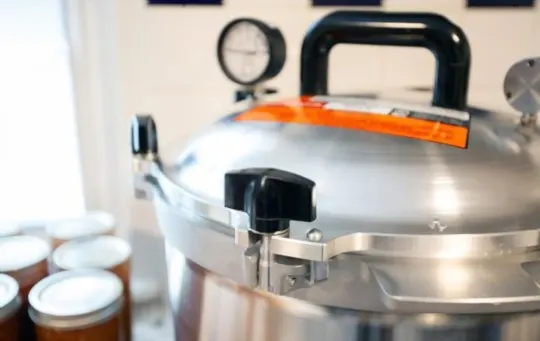
Pressure canning is a method of preserving food in which heat is used to kill bacteria and other microorganisms.
It involves placing food into jars, sealing them tightly with lids and bands, and then boiling them at a high temperature under pressure.
This process creates an environment that is hostile to most microorganisms, ensuring that the food will be safe to eat for an extended period.
Pressure canning ensures that low-acid foods are heated to a high enough temperature to destroy any harmful bacteria or other microorganisms that may be present.
This is particularly important since botulism spores can survive in low-acid environments and produce deadly toxins if not destroyed.
If you want to do pressure canning at home, it’s important to carefully follow instructions for each recipe or product you plan to preserve.
The process requires specialized equipment such as a pressure canner with a gauge that accurately measures the pressure inside the pot.
What is Water Bath Canning?
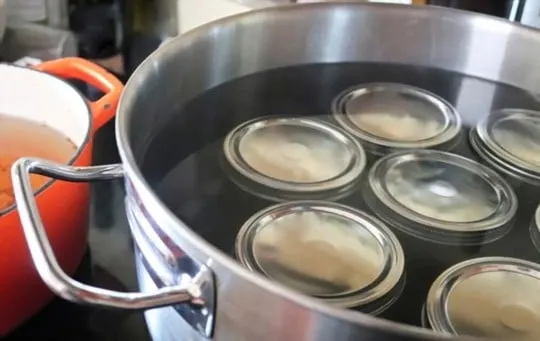
Water bath canning is a popular method of preserving low-acid foods like tomatoes, pickles, and fruit.
This process involves heating jars of food in a large pot of water for a set period of time to kill off any harmful bacteria and seal the jars.
Unlike pressure canning, which uses high pressure and temperatures to preserve food, water bath canning is much simpler and requires fewer supplies.
When using this method, it is important to select recipes that have been tested for safety by reputable sources.
It’s also crucial to follow instructions carefully and use recommended processing times based on the size of the jar and the type of food being preserved.
Overall, water bath canning is an easy, affordable way to extend the shelf life of your favorite fruits and vegetables.
By properly sterilizing jars and heating them in boiling water, you can create delicious preserves that last for months or even years.
Differences Between Pressure Canning and Water Bath Canning
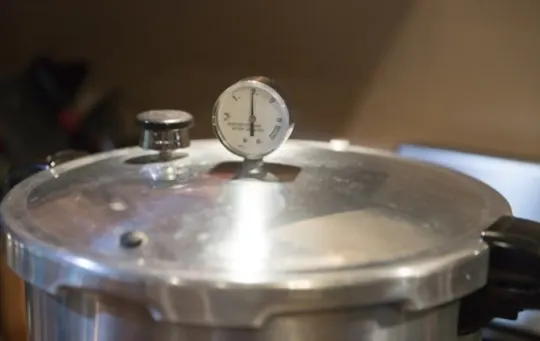
The Differences Between Pressure Canning and Water Bath Canning are significant in terms of the type of food that can be preserved and the equipment required.
While both methods involve sealing the jars to avoid bacterial contamination, they differ in terms of the temperature and pressure applied during processing.
Method and Equipment
The method and equipment used for pressure canning and water bath canning are different.
Pressure canning requires specialized equipment, such as a pressure canner, whereas water bath canning uses a large stockpot.
The difference lies in the fact that pressure canners come with a locking lid that creates a high-pressure environment inside the vessel.
When it comes to method, once you have packed your jars with food and closed them with lids, the only thing left is to seal them.
For water bath canning, this means immersing sealed jars in simmering water up to their brims.
For pressure canning, you need to put some water at the bottom of your pressure cooker before placing jars inside.
The pressure in the container must then be raised according to guidelines before starting the process.
Moving on from understanding method and equipment differences between these two types of preserving systems, it is now crucial that we explore safety consideration when determining what kind of food product are ideal for either of these two systems.
Food Types and Safety Considerations
When it comes to canning, safety should be the top priority.
Canning is a process that involves preserving food for extended periods by sealing it in airtight containers.
Therefore, the quality of the container and the contents inside must be taken into consideration before beginning any canning project.
Different food types require different processing times and temperatures to ensure they are safe for consumption.
For example, when canning fruits like apples, blueberries, or cherries, water bath is the recommended method because these fruits are high in acid.
On the other hand, vegetables such as carrots or green beans contain lower acidity levels and are highly susceptible to Clostridium Botulinum bacteria growth if not processed correctly.
Therefore, pressure canning is required to achieve the high temperatures required for safe preservation.
It’s also essential to check each recipe for ingredients that may impact processing times and temperature requirements when choosing between pressure canning and water bath methods.
For example, recipes containing meat or flour-based sauces may require pressure canning due to their low-acidity content.
Ensuring your cans are tightly sealed is critical regardless of which method you opt for.
Also, follow your chosen method instructions closely regarding lid preparations as this plays an important role in ensuring proper sealing.
Processing Time and Temperature
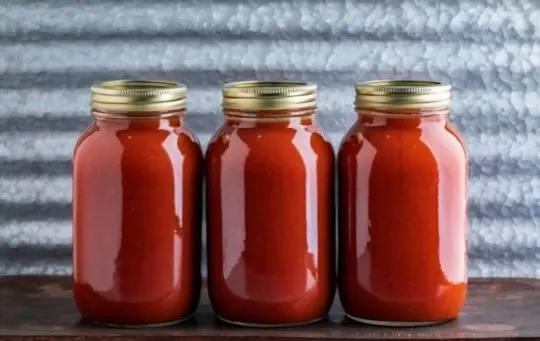
Processing Time and Temperature is an important aspect when it comes to canning food to ensure that they are safe to eat.
The duration for which the food needs to be processed in either a water bath or a pressure canner depends on factors such as acidity, density, and consistency of the food being canned.
The ideal temperature at which the food should be processed also varies accordingly.
In summary, Processing Time and Temperature are key factors that must be taken into consideration when canning food using either a water bath or a pressure canner.
The ideal temperature at which the food should be processed varies depending on whether it is high-acid or low-acid.
The duration for which the food needs to be processed also varies based on factors such as density, consistency, and altitude.
Examples of Foods that Require Pressure Canning
When it comes to canning, not all foods are created equal.
Some require a high-pressure canner to safely preserve them, as they are low in acid and can harbor harmful bacteria if not canned properly.
Pressure canning is necessary for these types of food because the higher temperature achieved during the process kills any harmful bacteria present.
It’s important not to skip this step or use a water bath method instead.
If you’re unsure if a food requires pressure canning or water bath canning, check the pH level.
Low acid foods with a pH level greater than 4.
6 require pressure canning.
It’s also important to follow specific recipes for each type of food when pressure canning.
This ensures the correct amount of processing time and pressure is used for maximum safety.
In summary, using a pressure canner is crucial when preserving low acid foods, as it ensures the safety of the food by eliminating harmful bacteria.
Always check the pH level and follow recipe instructions for each type of food.
Examples of Foods that Can Be Water Bath Canned
Water bath canning is suitable for acidic foods with a pH below 4.
6 since it prevents the growth of bacteria and microorganisms that cause spoilage.
These foods have enough acid to prevent the growth of Clostridium botulinum, which causes botulism.
The water bath method involves placing jars in a boiling water bath for a specified period based on the contents and altitude.
When using the water bath method for canning food items without adding acids such as lemon juice or vinegar (as required in pressure canning), jars must be sterilized to prevent bacterial contamination.
Ensure that there are no air pockets before putting lids on and tightening rings.
Home-canned products should also be evaluated before use by checking for indicators such as cloudy liquid content or off smell.
Which Method is Best?
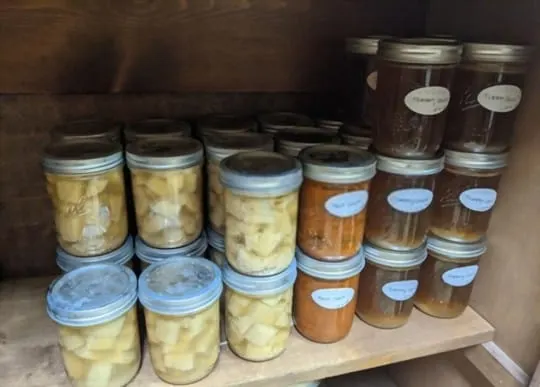
When it comes to canning food, you may wonder which method is best – pressure canning or water bath canning? Let’s take a look at the pros and cons of each method to help you determine which one is right for your needs.
Water bath canning is great for high acid foods like fruits, pickles and jams.
It’s an easy method that doesn’t require any specific or technically advanced equipment.
Plus, it takes comparatively less cooking time than pressure canning.
However water bath canning won’t be helpful if you want to preserve meat or vegetables since these are low acid foods that require more extensive processing than what simple boiling can achieve.
On the other hand, pressure canning requires specialized equipment and takes more time but it’s the only suitable method for low acid foods like meat, fish and vegetables.
The reason is simple – water bath canning may not be strong enough to battle all microbes in them.
In short, if you want to store low acid foods safely for extended periods of time you should opt for pressure canning.
It’s worth noting that with advanced technology and market penetrations; safe, pre-packaged food storage options are available today that hardly require manual processing technique.
So which method is best? It really depends on what you’re looking to preserve.
If you want to store high acid foods like fruit, pickles and jams, water bath canning is an effective method.
However, for low acid foods like meat and vegetables, pressure canning is the way to go.
Don’t forget to consult an expert or thoroughly research guidelines before you begin the process.
Conclusion
To sum up, both pressure canning and water bath methods are effective in preserving food.
However, the best method for you depends on the type of food you want to preserve and the time and equipment you have available.
Furthermore, if you don’t have a lot of time to spend preparing your items or supervising them during processing then water bath may be more appropriate for you as it takes less time than pressure canning.
Overall, it’s worth taking some time to figure out what suits your preferences better.
Both methods have their pros and cons depending on what type of food you’re preserving and how busy your schedule is.
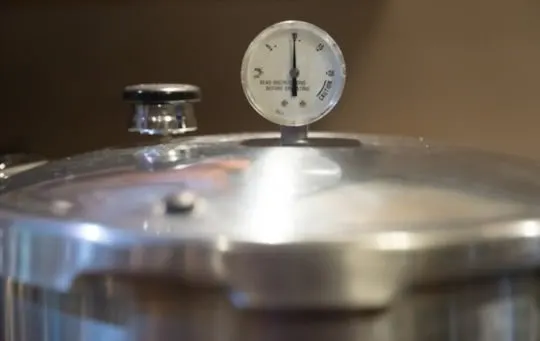
Pressure Canning vs Water Bath Canning: What’s the Difference?
Ingredients
- Pressure Canning
- Water Bath Canning
Instructions
- Choose between pressure canning and water bath canning based on the recommended method for your specific recipe.
- Follow the appropriate canning directions for your chosen method, ensuring you understand the necessary steps and safety precautions.
- Prepare your jars, lids, and ingredients according to the canning recipe guidelines.
- For water bath canning, fill a large pot with water and bring it to a boil. Submerge the filled jars into the boiling water and process for the specified time.
- For pressure canning, fill the pressure canner with the recommended amount of water, place the filled jars inside, and secure the lid. Follow the instructions for your specific pressure canner model to achieve the appropriate pressure and processing time.
- Monitor the canning process closely, ensuring the jars remain submerged or pressurized for the designated time.
- Once the processing time is complete, carefully remove the jars from the canner using canning tongs or a jar lifter.
- Allow the jars to cool undisturbed on a towel or cooling rack. Listen for the satisfying “pop” of the lids as they seal.
- Check the seals after cooling to ensure they are firm and secure.
- Label and store your canned goods in a cool, dark place, ready to be enjoyed at a later date.
- Remember to consult reliable canning resources and recipes for specific instructions and processing times based on the type of food being preserved.

Andrew Gray is a seasoned food writer and blogger with a wealth of experience in the restaurant and catering industries. With a passion for all things delicious, Andrew has honed his culinary expertise through his work as a personal chef and caterer.
His love for food led him to venture into food writing, where he has contributed to various online publications, sharing his knowledge and insights on the culinary world. As the proud owner of AmericasRestaurant.com, Andrew covers a wide range of topics, including recipes, restaurant reviews, product recommendations, and culinary tips.
Through his website, he aims to inspire and educate fellow food enthusiasts, offering a comprehensive resource for all things food-related.
